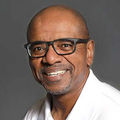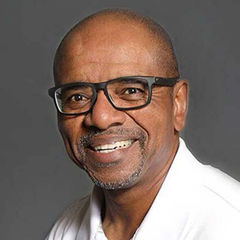This article originally appeared in the U.S. News & World Report on December 28, 2020.
The Evolution of Fitness Trends
Here's a fitness expert's rundown of the history of exercise trends and products, and what may lie ahead.
By Cedric X. Bryant, Ph.D., Contributor Dec. 28, 2020, at 7:00 a.m.
SOME WOULD SAY THE fitness industry in the United States got its start in the 1970s, when early icons like Judi Sheppard Missett, Jane Fonda and Arnold Schwarzenegger introduced the world to aerobics and pumping iron.
Of course, exercise existed well before it was popularized and commercialized. And while we have moved past the hula hoops and vibrating belts of the 1950s and 60s, most people’s goals have remained the same: to improve their health, fitness and appearance through physical activity.
Consider the following rundown of the history of exercise trends and products, where we are today and what may lie ahead.
Fitness Trends Over the Years
The 1970s
Kenneth Cooper coined the term “aerobics” in the late 1960s to describe a program he created to prevent coronary artery disease. The term aerobic literally means "with oxygen." In the context of exercise, it represents activities like walking, running, and cycling that are associated with increases in breathing and heart rate.
Aerobics was the jumping off point for all types of aerobics workouts, from dance to step and even water-based classes. Judi Sheppard Missett introduced the world to Jazzercise just prior to the start of the decade, and the world embraced her hybrid of jazz dance, kickboxing, ballet, Pilates and yoga – all choreographed and set to music.
The 1980s
Jazzercise set the stage for Jane Fonda and Richard Simmons, who were the faces of fitness throughout the decade. At the same time, the idea of going to a gym to work out became commonplace thanks to the growing popularity of Nautilus variable-resistance training equipment and the proliferation of corporate gym chains.
In addition, home exercise equipment was introduced to the marketplace, adding resistance training to the workouts that people had already grown accustomed to doing at home.
This is also the decade when the fitness industry began the process of becoming more “professional” through certification organizations. One of the first fitness organizations to certify exercise professionals was the organization I work for, the American Council on Exercise, founded in 1985. During this decade, as the demand for certified exercise professionals grew, other certifying organization entered the industry. Now, 35 years later, ACE has more than 90,000 active certified exercise professionals around the world.
The 1990s
This was a decade marked by late-night infomercials, perhaps the most successful of which was Billy Blanks’ Tae Bo, a combination of high-intensity cardio, martial arts and hip hop moves. Meanwhile, spinning launched a cycling revolution in the mid-90s that continues to this day.
The 2000s
The turn of the millennium was dominated by the Latin dance moves of Zumba and the high-intensity competition and community of Crossfit.
The 2010s and Beyond
What you may have noticed about the trends described above is that they tend to focus on the same foundational ideas: fun and exciting aerobic workouts that get the blood pumping and build a sense of community and camaraderie, and making workouts – both cardio and strength training – as time efficient and convenient as possible (whether that’s at home or in the gym).
And these ideas continue to fuel the industry now and into the future:
- High-intensity interval training (HIIT)
- Peloton (the exercise bike).
- The MIRROR, an interactive home gym that features instructor-led workouts on a large screen.
- Apple Fitness+, the new Apple Watch-focused service that guides participants through a wide variety of workout formats led by trained fitness instructors
All of these currently popular modalities and products aim to maximize both the exerciser’s time and the benefits of the workouts themselves.
The future of the exercise industry will likely combine these bedrock principles with technology that's designed to improve people’s overall health and wellness. Fitness apps, virtual coaching and online classes exploded during the COVID-19 pandemic and are undoubtedly here to stay, as they have proven to be a convenient and effective way to improve one’s health and fitness.
Wearable devices like the Apple Watch and FitBit count steps, monitor heart rate, count calories burned and measure the quality of your sleep – and then let you connect with others to form social-support networks as you pursue your goals. Social media will likely play an ever-expanding role in every aspect of our lives, including our health and fitness. From online challenges that bring people together to pursue a common objective to fitness “influencers,” social media is here to stay.
On its surface, the fitness industry is built on trends, but at its foundation is the quest for fun, effective and time-efficient workouts that improve people’s function, health, fitness and performance. And that will always be on trend.
The mention of specific brands and/or products do not imply ACE endorsement.




 by
by 






 by
by